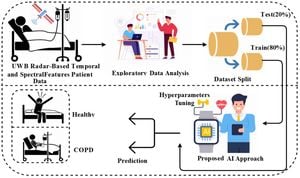Japan is increasingly adopting information technology to assist those needing help during disasters, especially the elderly and disabled. These initiatives aim to digitalize data on safety confirmation and evacuation management which were traditionally carried out on paper. This shift is intended to help local governments collaborate more effectively with care managers and others who understand the living conditions of those requiring evacuation assistance, including solitary individuals, to guarantee no one is left behind.
Recently, major electronics maker NEC Corp. and disaster management advisory firm Tokio Marine Resilience Co. conducted tests with the western Tokyo city of Tama to assess the functionality of their new system. This system is focused on confirming the safety of individuals who need support during emergencies, effectively streamlining the process.
According to Jiji Press, when local governments release evacuation-related information, those providing evacuation support can receive requests for safety checks directly on their smartphones. The support providers use a specialized smartphone application to reach out to those needing assistance, confirm their safety, and manage other relevant information such as damage extent and evacuation locations.
The Tama city government acknowledged the current methods of managing information about vulnerable individuals. Presently, this data, including individual evacuation plans, is mainly documented on paper, leading to challenges concerning time and efficiency when sharing and pooling related information. This traditional approach can hinder effective disaster management efforts.
These technological advancements promise significant enhancements to disaster preparedness. By digitalizing the approach, support providers can act more swiftly and effectively during emergencies, ensuring the needs of vulnerable populations are addressed. The integration of this technology not only modernizes the capabilities of local governments but also fosters closer collaboration among care managers and other support entities.
Such initiatives are not just about innovation; they reflect Japan’s commitment to creating inclusive disaster response strategies. With natural disasters being increasingly unpredictable and intense due to climate change, ensuring the safety of those who may struggle to evacuate or seek help is more important than ever.
This is particularly relevant as Japan's demographic trends see increasing numbers of elderly individuals and people with disabilities, who often require specialized support during crisis situations. By leveraging IT solutions, not only is the efficiency of disaster response being enhanced, but it is also ensuring the dignity and safety of those most at risk.
Japan’s increasing reliance on technology is indicative of a larger global trend where governments are exploring digital avenues to bolster their disaster management frameworks. The successful implementation of these systems could serve as a model for other nations grappling with the challenges of supporting their most vulnerable populations during crises.
Lastly, as these programs gain momentum, it will be important for stakeholders to evaluate their effectiveness continually. Feedback from both the support providers and recipients of assistance will be key to refining the processes involved, ensuring they meet the intended objectives of efficiency and comprehensive support.
This transformative approach to disaster management stands to redefine how local governments interact with their communities and safeguard their wellbeing. By merging technological innovation with compassionate support, Japan is paving the way for more resilient and inclusive future disaster management practices.



